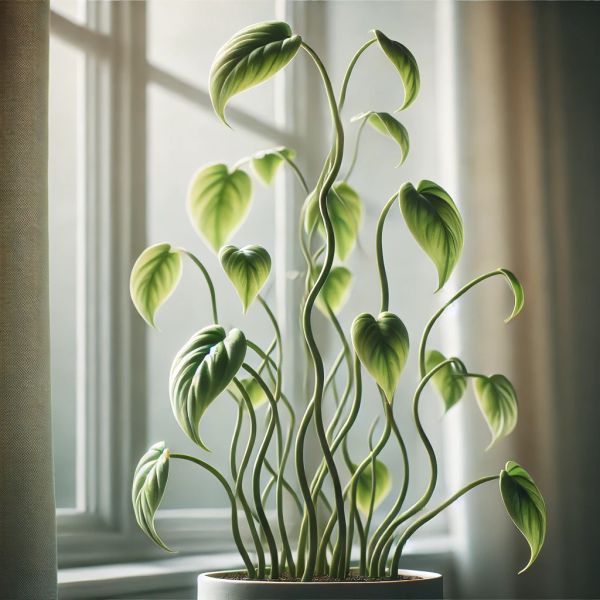Stunted or Leggy Growth: Causes & Solutions
Is your plant growing too slowly, staying small, or stretching toward the light? Learn the common causes of stunted or leggy growth and how to fix them.
Healthy plants should grow steadily with strong stems and vibrant leaves. However, if your plant is growing very slowly, has weak, spindly stems, or looks stretched out, it may be suffering from environmental or nutrient-related issues.

Disclosure: This content includes affiliate links, which means we may earn a commission if you click on a link and make a purchase. As an Amazon Associate, we earn from qualifying purchases. This comes at no extra cost to you and helps offset the cost of running Leafwise. Please read our disclaimer for more info.
Common Causes of Stunted or Leggy Growth
1. Insufficient Light
Plants need the right amount of light to grow properly. Too little light can cause slow growth or leggy, stretched-out stems.
- Symptoms: Tall, thin stems with wide gaps between leaves, leaves losing color or turning pale.
- How to Diagnose: If the plant is leaning toward a light source or has weak, elongated growth, it's likely light-deprived.
-
How to Fix It:
- Move the plant to a brighter location with indirect or direct sunlight, depending on the species.
- Use grow lights if natural light is insufficient.
- Rotate the plant regularly to encourage even growth.
2. Nutrient Deficiencies
A lack of essential nutrients, particularly nitrogen and phosphorus, can cause slow or weak growth.
- Symptoms: Small, pale leaves, weak stems, slow overall development.
- How to Diagnose: If older leaves are turning yellow and growth is sluggish, the plant may lack key nutrients.
-
How to Fix It:
- Use a balanced liquid fertilizer to provide essential nutrients.
- Check the soil pH to ensure nutrients are available for absorption.
- Repot the plant in fresh, nutrient-rich soil if necessary.
3. Root Bound or Poor Soil Conditions
If a plant is root-bound (outgrowing its pot) or in compacted soil, it may struggle to absorb nutrients and grow properly.
- Symptoms: Roots circling inside the pot, soil drying out too quickly, slow growth despite proper care.
- How to Diagnose: Check the roots—if they're tightly packed and emerging from drainage holes, the plant is root-bound.
-
How to Fix It:
- Repot the plant into a slightly larger container with fresh, well-draining soil.
- Trim off excess roots if they are densely packed.
4. Temperature Stress
Extreme temperatures can slow plant growth or cause legginess if the plant is struggling to adapt.
- Symptoms: Growth stalls in cold conditions; weak, elongated growth in warm conditions.
- How to Diagnose: If growth slows significantly during colder months or becomes overly stretched in warm environments, temperature stress may be the cause.
-
How to Fix It:
- Keep plants in their preferred temperature range (usually between 65–75°F for most houseplants).
- Avoid placing plants near drafts, heaters, or air conditioning vents.
5. Overcrowding or Competition
If plants are too close together, they may compete for light, nutrients, and space, leading to stunted or leggy growth.
- Symptoms: Plants growing unevenly or failing to thrive despite adequate care.
- How to Diagnose: If plants are packed closely together, check if they are shading each other or struggling for space.
-
How to Fix It:
- Space plants properly to ensure each one gets enough light and air circulation.
- Thin out overcrowded pots by separating plants or repotting individually.
Preventing Stunted and Leggy Growth
- Provide Adequate Light: Keep plants in bright, indirect light or supplement with grow lights.
- Use Balanced Fertilization: Feed plants with a balanced fertilizer to support healthy growth.
- Repot When Needed: Ensure plants have enough room for root expansion.
- Maintain Proper Temperature: Keep plants in stable temperature conditions to prevent stress.
Need More Help?
If you're still unsure about why your plant is growing slowly or stretching, try the Leafwise Plant Health Diagnosis Tool for a personalized assessment.
